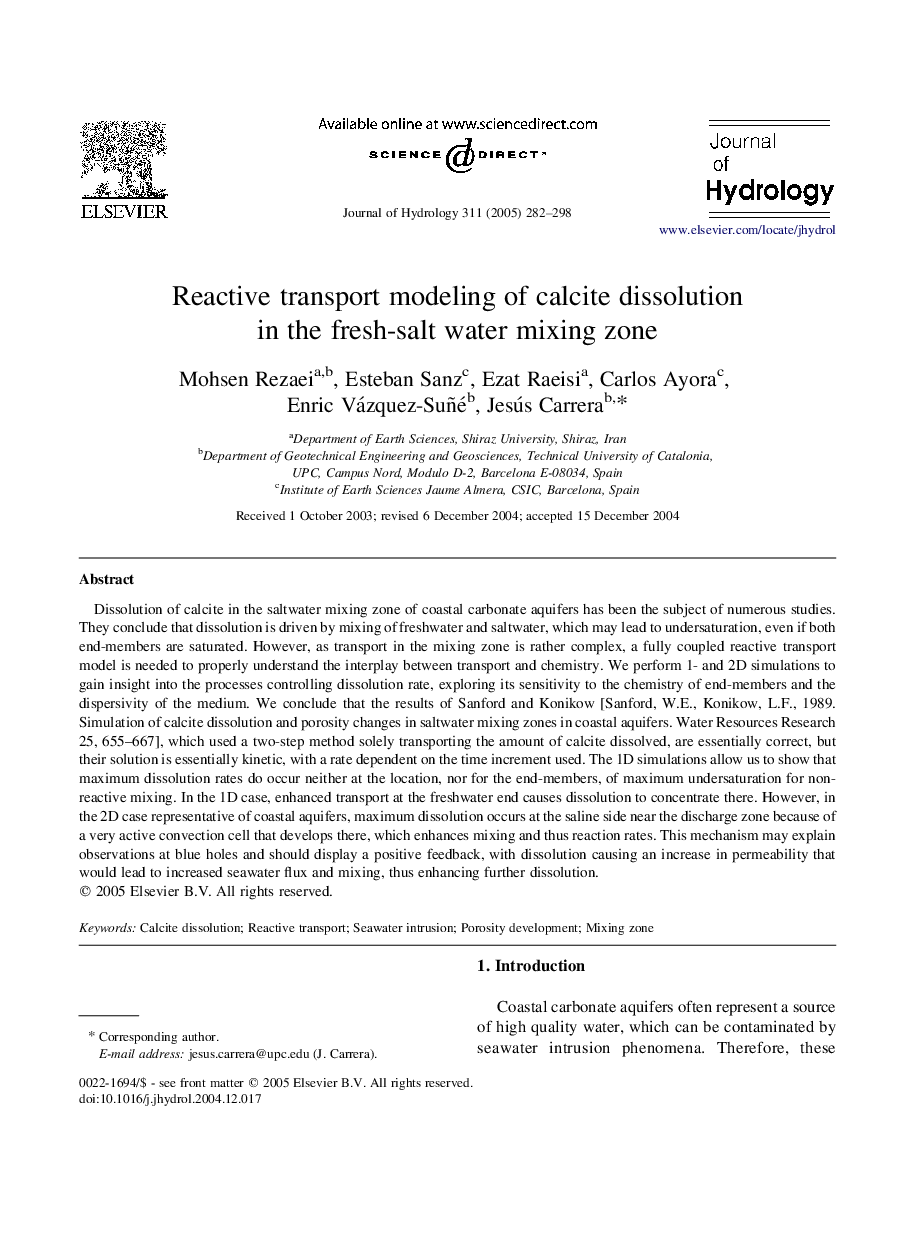| کد مقاله | کد نشریه | سال انتشار | مقاله انگلیسی | نسخه تمام متن |
|---|---|---|---|---|
| 9491349 | 1630180 | 2005 | 17 صفحه PDF | دانلود رایگان |
عنوان انگلیسی مقاله ISI
Reactive transport modeling of calcite dissolution in the fresh-salt water mixing zone
دانلود مقاله + سفارش ترجمه
دانلود مقاله ISI انگلیسی
رایگان برای ایرانیان
کلمات کلیدی
موضوعات مرتبط
مهندسی و علوم پایه
علوم زمین و سیارات
فرآیندهای سطح زمین
پیش نمایش صفحه اول مقاله

چکیده انگلیسی
Dissolution of calcite in the saltwater mixing zone of coastal carbonate aquifers has been the subject of numerous studies. They conclude that dissolution is driven by mixing of freshwater and saltwater, which may lead to undersaturation, even if both end-members are saturated. However, as transport in the mixing zone is rather complex, a fully coupled reactive transport model is needed to properly understand the interplay between transport and chemistry. We perform 1- and 2D simulations to gain insight into the processes controlling dissolution rate, exploring its sensitivity to the chemistry of end-members and the dispersivity of the medium. We conclude that the results of Sanford and Konikow [Sanford, W.E., Konikow, L.F., 1989. Simulation of calcite dissolution and porosity changes in saltwater mixing zones in coastal aquifers. Water Resources Research 25, 655-667], which used a two-step method solely transporting the amount of calcite dissolved, are essentially correct, but their solution is essentially kinetic, with a rate dependent on the time increment used. The 1D simulations allow us to show that maximum dissolution rates do occur neither at the location, nor for the end-members, of maximum undersaturation for non-reactive mixing. In the 1D case, enhanced transport at the freshwater end causes dissolution to concentrate there. However, in the 2D case representative of coastal aquifers, maximum dissolution occurs at the saline side near the discharge zone because of a very active convection cell that develops there, which enhances mixing and thus reaction rates. This mechanism may explain observations at blue holes and should display a positive feedback, with dissolution causing an increase in permeability that would lead to increased seawater flux and mixing, thus enhancing further dissolution.
ناشر
Database: Elsevier - ScienceDirect (ساینس دایرکت)
Journal: Journal of Hydrology - Volume 311, Issues 1â4, 15 September 2005, Pages 282-298
Journal: Journal of Hydrology - Volume 311, Issues 1â4, 15 September 2005, Pages 282-298
نویسندگان
Mohsen Rezaei, Esteban Sanz, Ezat Raeisi, Carlos Ayora, Enric Vázquez-Suñé, Jesús Carrera,